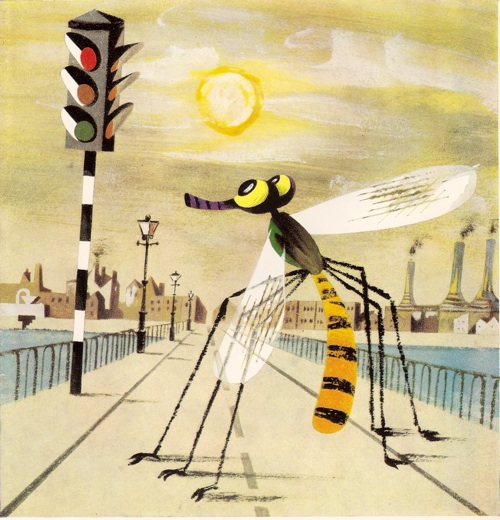I was going to try and order the Recording Britain pieces so that they told a story, but that requires a kind of logical organisation which eludes me at the moment. Also I have spilt coffee on my keyboard and now my space bar doesn’t work properly, so writing is harder work than it needs to be.
Instead, then, you get this.

A Barbara Jones picture of The Hop Castle at Chieveley in Berkshire, a place now better known for being services on the M4. The building is, unusually, even more strange than it appears in her picture, because the outside is faced not just in flints but in animal bones and skulls.
Barbara Jones painted a lot of follies and grottos for Recording Britain, and she was the only artist to choose them as a subject. I think she was right, the frivolous and whimsical is an important part of the English character.
It’s a subject which comes up every so often on here, and covers all sorts of graphics and design of that period, from the work of Rowland Emett – here in Basildon.

To Lewitt-Him’s designs

To categories in the Artist Partner’s brochure.

That’s kind of a digression, but it isn’t. The Hop Castle is still standing and has recently been refurbished, but it also exists in the present in another form.

This is the Hop Castle Set from a group called the Dickens Village. And no, I do not know what the man in purple thinks he is doing. It’s the same building, but now made out of porcelain as a limited edition of 5600, and it’s a collectable.
Dickens Village – a vast assemblage of illuminated tweeness which seem mostly to be decorated for Christmas – have been made and sold in America since 1984, and the range has been growing since then, including an Anglesey Cottage made to celebrate the wedding of Prince William and Kate Middleton. The website asks me if I ‘need help?’. I think I do.
There is a lot I could say about this, about the way in which Britishness, which the Recording Britain project was set up to preserve, has been commoditised and sold to other nations. And how, in the process, all the bones and skulls and weird stuff gets left behind. But for now, let’s concentrate on one thing. The Hop Cottage is small, it’s functionless, but it’s very definitely whimsical.
I know this is an American product, but at the same time it represents what has happened to the idea of whimsy in the seventy five years since the end of the war. Back then it was something which was entertaining and unnecessary, but which could also be quite sophisticated and modern. Being part of our national character, it had to be something which every single one of us could embrace.
Now, though, whimsy has become debased. There’s nothing chic, or even entertaining about it now; instead it is twee and slightly cloying, and also dangerously nostalgic. And it’s used to sell functionless objects which have no purpose other than to celebrate those attributes. It’s not something to be proud of at all. And that is a great loss.